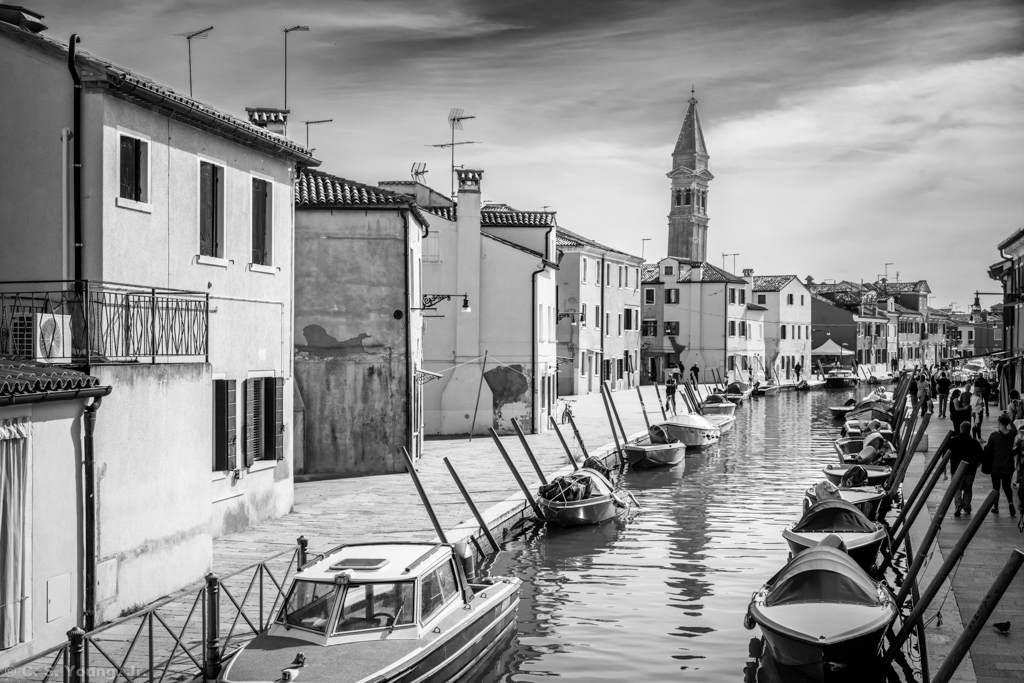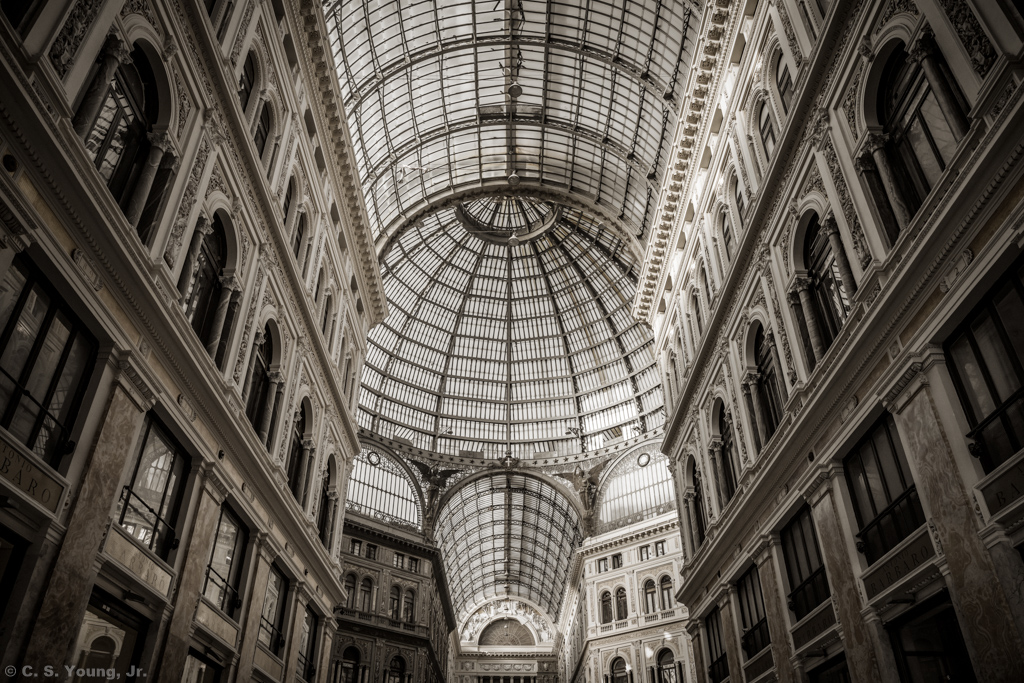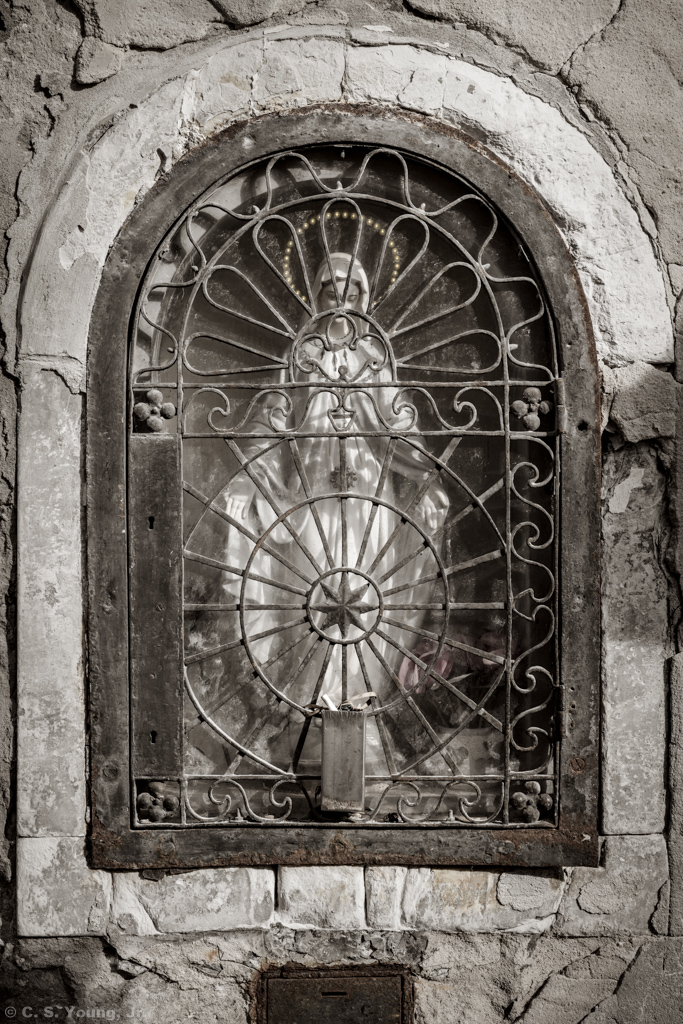
Shrimp Day
To see more markets in Bologna, please visit my blog here.

Burano, Italy is known for its colorful homes and buildings. But it can be equally intriguing in monochrome. This view is along the Fondamenta della Pescheria Canal. The Church of Saint Martin Bishop tower is in the background. See more of my photos from my Burano and Murano gallery.
The ancient Greek Theater of Taormina’s construction starting in the 3rd century BC, and was later embellished by the Romans. The theater overlooks the Ionian Sea and Mount Etna, Sicily. For the best viewing experience, click to select a high resolution version.
Cheers,
C. S.

Cefalù, Sicily, Italy

This is the my second composition from the Galleria Umberto I in Naples, Italy. See my dome composition here.
Cheers,
C. S.

Small roadside shrines are a recurring theme in the Italian cityscape. During my visit to Venice, several of these caught my eye. My research revealed there are hundreds of these Catholic shrines in a wide variety of places and different building materials including wood, metal, plaster, or carved into stone. The shrines are dedicated to the saints, this one to the Our Lady, Star of the Sea.
The Catholic Encyclopedia references the title ‘Mary, Star of the Sea’ originating from St. Jerome’s fifth century translation of Mary’s Hebrew name Miryam, meaning ‘drop of the sea’, into Latin ‘Stilla Maris’ which later became Stella Maris, likely from peasant dialect. Like the North Star, Mary, Star of the Sea provided spiritual comfort to Middle Age sailors during stormy seas.
St. Bernard of Clarvaux so beautifully wrote,
“If the winds of temptation arise; If you are driven upon the rocks of tribulation look to the star, call on Mary; If you are tossed upon the waves of pride, of ambition, of envy, of rivalry, look to the star, call on Mary. Should anger, or avarice, or fleshly desire violently assail the frail vessel of your soul, look at the star, call upon Mary.”

Cefalù, Sicily, Italy
You must be logged in to post a comment.